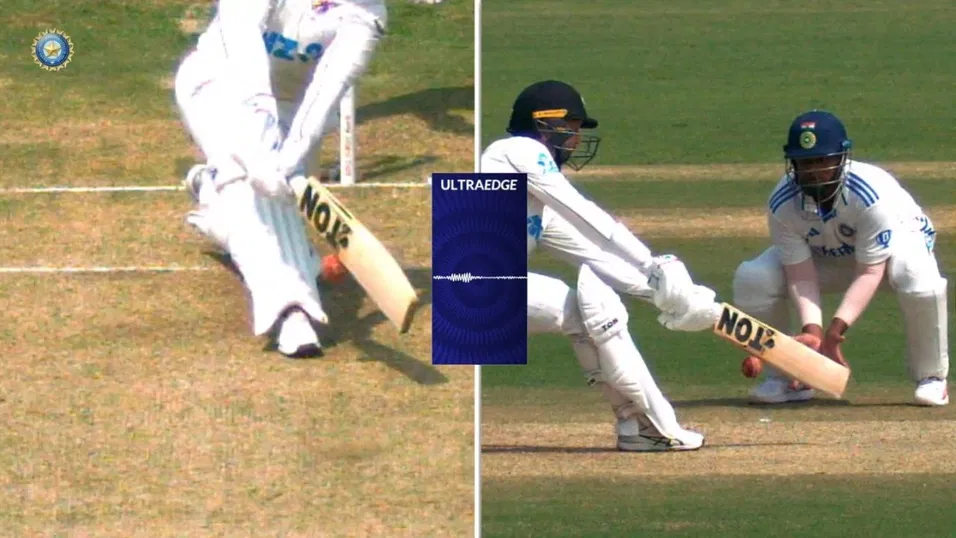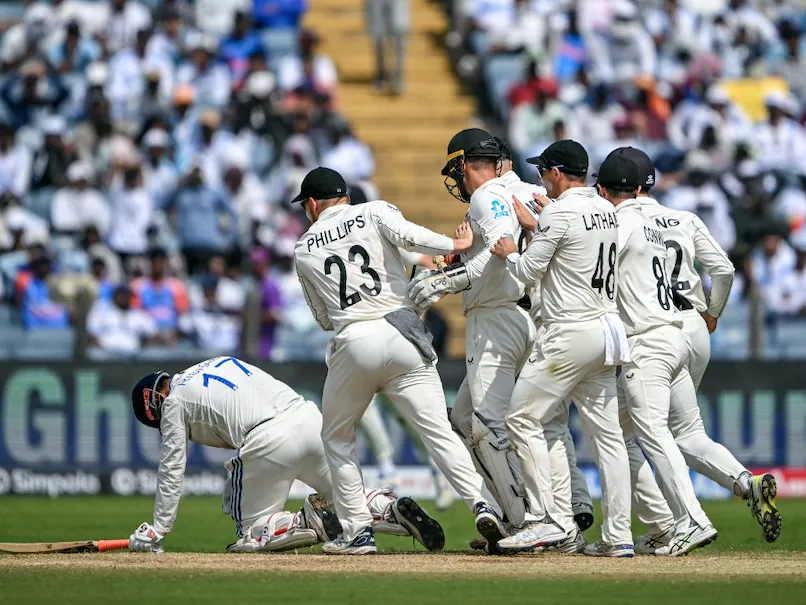After a 12-year streak of 18 consecutive home series wins, India’s dream run ended with a whimper. India was stunned by New Zealand’s remarkable 113-run victory in the second Test in Pune. Indian batsmen considered better players of spin were clueless against Santner, which raised many eyebrows. The retirement of senior players like Rohit and Kohli has been a hot topic on social media.
Former New Zealand fast bowler turned commentator, Simon Doull said, “I think it is a misconception around the world now that these modern Indian players are better playing spin than anyone else. They are not. They are the same as everyone else around the world. Gone are the days of Ganguly, Gambhir, Laxman and Dravid. Sachin was so, so good against spin, and the era before them”. Was Simon Doull, right?
As Simon Doull said, are the current Indian batsmen less skilled than the former Indian greats in tackling spin bowling? Did Kiwi batsmen devise a new technique to counter quality spinners like Ashwin and Jadeja on Indian pitches? Will this series loss end the invincibility of the Indian team in the subcontinent aided by spin-friendly pitches in test cricket? Questions are varied, and there is no definitive answer for all these questions.
Those who criticise the current Indian batsmen and compare them to the former Indian greats have missed a major silent revolution that happened in international cricket recently, the Decision Review System, or in short, DRS. Pads and foot movements were critical in tackling spinners, and a batsman trying to defend or play a shot in the front foot was rarely adjudged leg-before-wicket in pre-DRS days. With the advent of DRS, batsmen have been compelled to make changes in their techniques to avoid getting trapped leg before wicket. This changed technique involved a different style of foot movement, and the predominant use of the bat to counter spin led to batsmen getting bowled and caught by fielders close to the bat.
The DRS (Decision Review System) became a double-edged sword during the Pune test, where the ball behaved unusually. This situation highlighted some drawbacks of DRS, particularly the “Umpire’s Call” rule. Several instances in the Pune test raised questions about this rule. For example, Shubman Gill was not given out, while Virat Kohli was adjudicated out after the appeal was referred to the third umpire, even though the DRS indicated that the ball was brushing the stumps in both cases. The “Umpire’s Call” was the issue on both occasions. Was this fair? It is time for the ICC to reconsider this rule.

Despite being caught at the forward short leg, Jadeja managed to get away because the umpire failed to spot the faint edge, and the New Zealand players did not appeal. Batsmen will suffer if the ICC issues further revolutionary decisions, such as having the third umpire decide dismissals, as is the case with no ball, without taking the player’s appeal or the field umpire’s judgement into account. This will be comparable to how hockey was changed by changes to the rules and surface. It took years to establish themselves as a major force in international hockey because Indians, who once dominated the sport with their dribbling prowess on grass, found it difficult to adjust to the revolutionary changes.
In the future, the other visiting teams might improve on the Kiwi batsmen’s approach to neutralising the threat posed by Indian spinners. Due to technological advancements in the sport, players will need to adapt their methods. This precludes comparison to the game’s past greats. The purpose of this DRS debate is to alert those naysayers of the subtle changes taking place in the game that they are unaware of, not to disparage the skills of past great players.
Now, what can the BCCI do to reclaim the Indian batsmen’s superiority against spinners? Making all Test players play first-class cricket, though necessary, is not good enough. The board needs to introduce the DRS in all the first-class matches starting from the preliminary level, which will enable the players to improve their techniques to avoid LBW through DRS. The captains will learn how and when to refer a decision to the third umpire. Thus, the BCCI can help the new talents adapt to the rigours of international cricket easily.
Several critical opinions and facts supported the doubts raised about the Indian players’ poor performance, which resulted in the series defeat to New Zealand. Statistics-based comparisons with past game greats are another foolishness that has infiltrated. In summary, we must conclude that statistics don’t always provide the complete picture, as the DRS example above illustrates.

